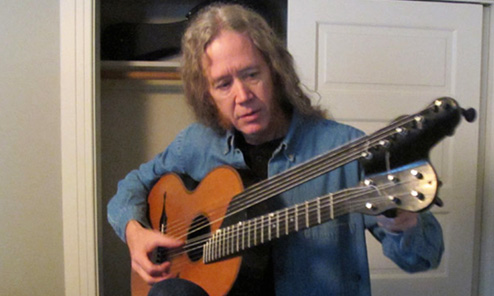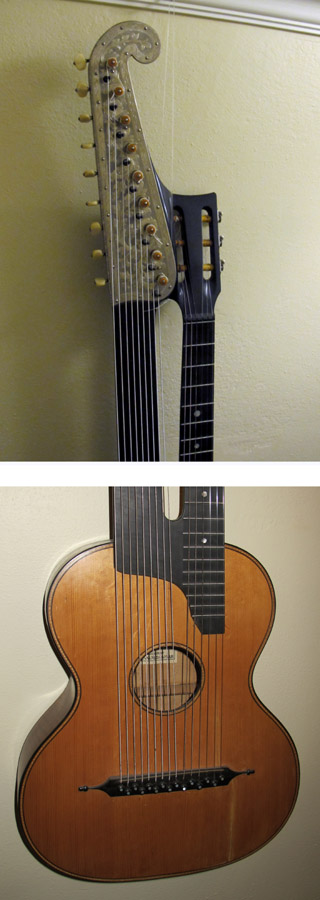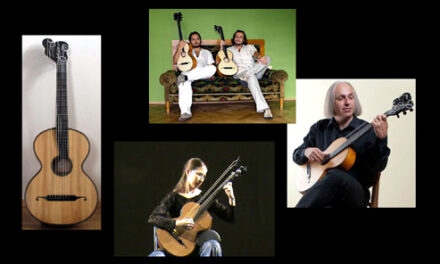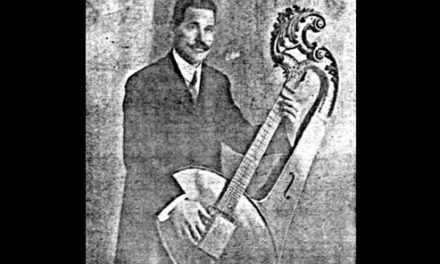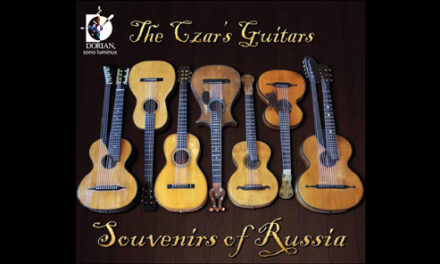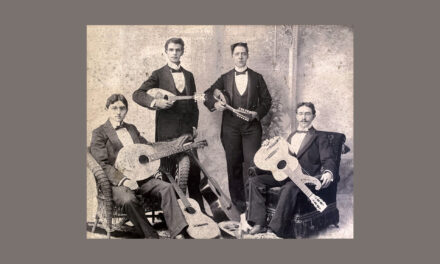I’m catching up with news as I slowly work backward through my list here…
At the very end of December, Frank (Doucette) and I drove down again to the charming Santa Ana Bowers Museum for a second concert by early music virtuoso John Schneiderman (you may recall the first, on his Russian harp guitar, which I blogged about last August).
This time, John played three different instruments, the 13-course baroque lute (performing Weiss and Kellner), his 1908 Eroshkin Russian 11-string (pieces by 3 Russian composers), and the gorgeous 10-string (4-bass) Hauser that I highlighted on my Christmas Eve blog. On the latter, he performed two Mertz pieces unfamiliar to me, originally published by Mertz for 6-string. He adapted these pieces for the 10-string, just as we know Mertz himself would have done, by dropping bass notes down an octave (into the subs) within the variations. John later claimed he did that specifically for my benefit (and after my admonishing him last August, I don’t doubt it!).
After the concert, John kindly invited us back to his home (with 2 other friends of his) to look at a few of his other instruments. It turns out he’s got a bit of the “harp guitar bug” himself, as we spotted some half dozen adorning a hallway.
Among a couple of unmarked kontragitarres, there was an Adolf Hornsteiner (Mittenwald, mid-century, above) and a 1943 Otto Prenosil (current Czech Republic, below).

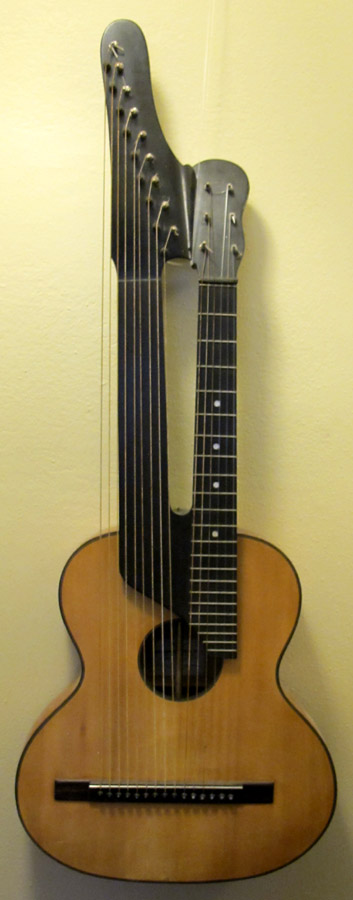
This 9-bass instrument had the label of Karl Hammerschmidt & Sons (back shown below), but had a different signature of the actual maker on the underside of the top, found during restoration.
The restorer of this and many of the others was local lute-maker Richard Lees, who was with us on the visit.
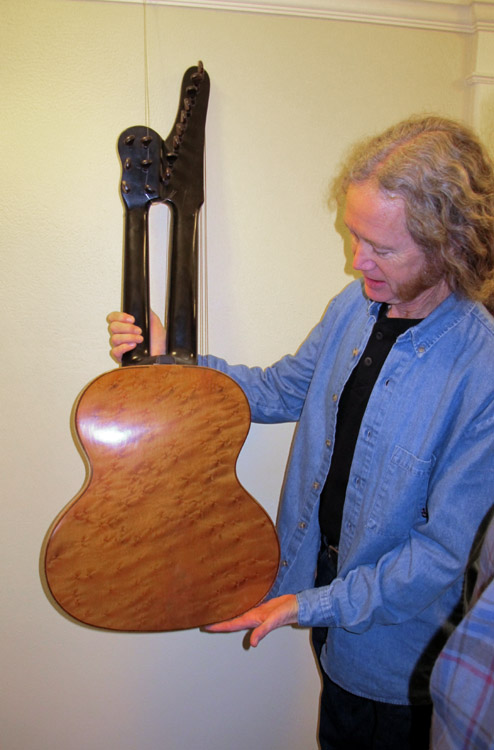
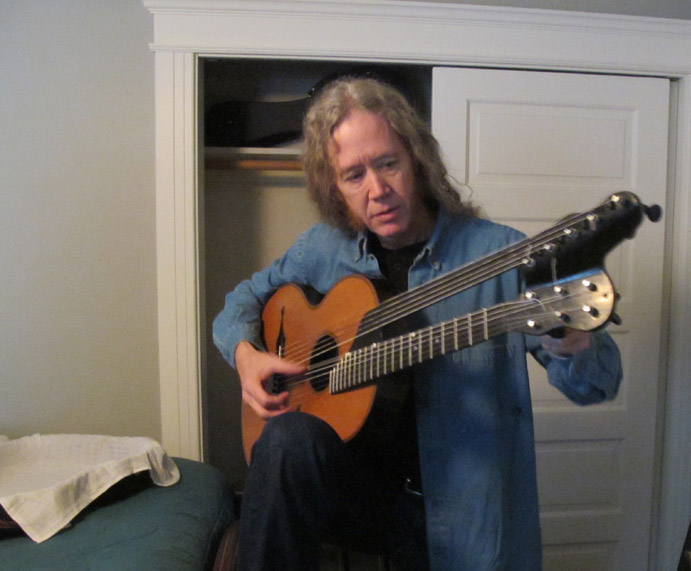
John next unveiled a prize: an authentic 1860 Scherzer with 5 subs.
This instrument has been fairly well-preserved, and John hopes to include it in his performances once he decides to bite the bullet and replace the inadequate friction tuners with Pegheds.
Frank and I are all for that if only to be able to hear it at John’s next concert!
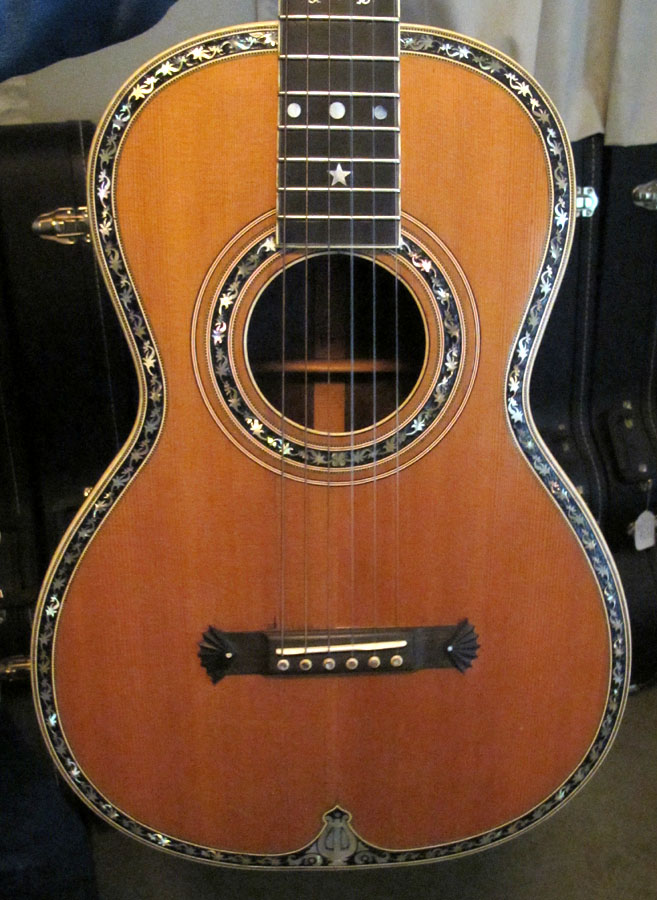
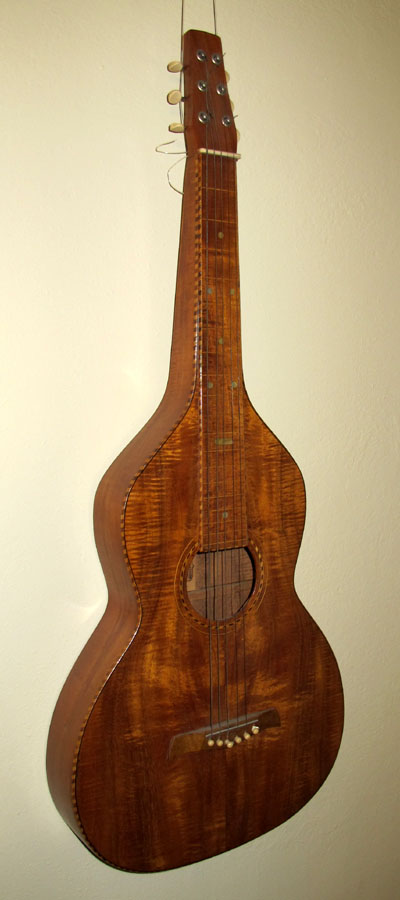
Other odds and ends included a gorgeous Washburn parlor guitar and his mother’s original Weissenborn (don’t we all wish our parents had played them?!).
We were then treated to a quick peek at some of John’s modern lute reproductions, many built by Bellingham, WA’s John Rollins, who built my own two lutes (commissioned for the making of my early-’90’s A Christmas Collection).
When Frank and I stumbled upon a couple shelves of John’s CD stock, we took the opportunity to stock up ourselves. Later, Frank agreed with my assessment that the original Trio Galanterie album is one of the most spectacularly-recorded audiophile CDs of lute music on the planet (let alone the performances!). It remains my all-time favorite 2 decades later. I am also enjoying the unique and delightful “mini-lute” sound (my own crude description) of the mandolino of Hideki Yamaya, dueting with John on The Mandolino in 18th Century Italy.
Did I mention that John also treated us to a virtuoso breakdown on the 5-string banjo complete with Scruggs-Keith tuner string bends? Amazing talent!
We’re glad John is delving so much into the world of harp guitars (just wait until the full Czar’s Guitars project is completed!), and I thank him for his time and hospitality.

